The difference between gymnastics for boys and girls
There are significant differences between classes for boys and girls. In rhythmic gymnastics you can rarely meet representatives of the stronger sex, while in sports and acrobatics they are the majority. Girls will be able to start training at the age of 3-5 if they have sufficient physical abilities, but boys will have to wait a year longer.
In the first couple of years, the general set of exercises for all children is aimed at developing physical capabilities, stretching, and basic learning of working with sports equipment. From the age of 7-8, girls are given an emphasis on artistry and choreography, flexibility and ease of movement, boys begin strength exercises, elements of martial arts, and complex acrobatic sketches.
At what age can you send your child to gymnastics?
The minimum age to start training is 3-5 years. In order for a child to achieve success, it is optimal to start classes at the age of 4-6 years. To achieve success in professional sports, it is better to send your child to schools in large cities. The career of a gymnast is short, many end it by the age of 20, go into coaching or give up the sport completely.
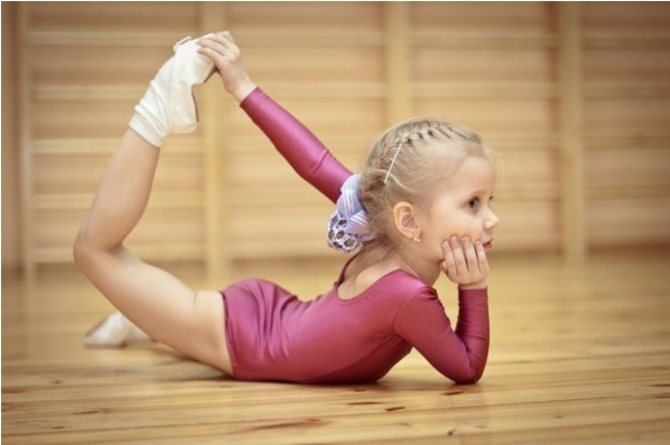
The maximum age for starting professional sports is 6-7 years. After this, you can attend training to improve the child’s physical characteristics, but it is too late to establish yourself as a budding gymnast.
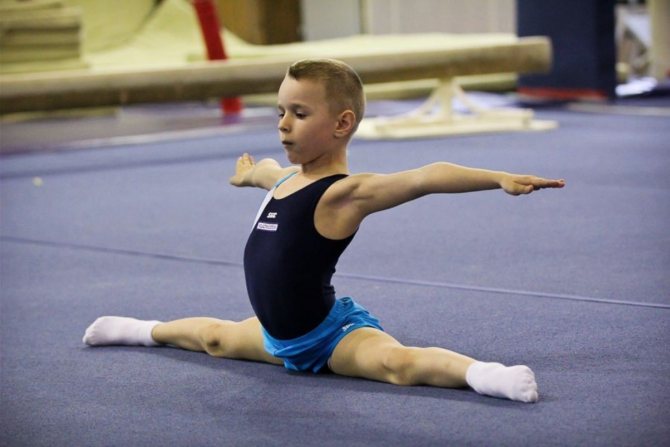
Can children do gymnastics?
People who did gymnastics in childhood have much better physical development, stronger immunity, and are less susceptible to diseases of the musculoskeletal system. Therapeutic exercises should be prescribed by a doctor if necessary and indicated. Professional sports require good health and permission from a pediatrician; without a certificate, a child will not be allowed to train. Therefore, before making a decision, you should find out about the indications and contraindications, possible benefits and harms to the body, and consult a doctor. The benefits of gymnastics for children
The benefits of gymnastics for the body are great. Gymnasts boast ideal posture, flexible, easy and flexible movements, and strong muscles. Immunity increases, children get sick less often. Exhausting workouts that require concentration and full dedication perfectly build character, discipline, and develop willpower, attention, memory, and self-confidence. At the same time, children become more artistic, they develop an ear for music and a sense of rhythm.
The harm of children's gymnastics
There are also side effects from gymnastics. Injuries come first. It is difficult to count how many torn ligaments, damaged joints and bones professional athletes have. The child will need to stretch every day, perform complex exercises, and overcome pain in the muscles and throughout the body.
Of the most common negative consequences of gymnastics:
- emotional exhaustion and burnout after intense training, losses in competitions;
- following a strict diet, which can lead to problems with the digestive system;
- poor performance at school;
- ligament ruptures, injuries;
- possible use of painkillers;
- constant stress.
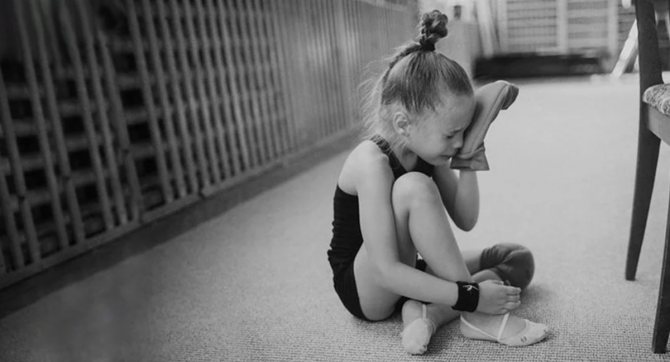
If these negative aspects do not disagree with the goals of the child and parents, then most of them can be overcome by choosing a good coach and additional classes with tutors.
Sports and rhythmic gymnastics. Pros and cons
These sports are not only beautiful, but also useful for children's development. Slimness, posture, agility are just some of the physical qualities that gymnasts possess.
But sports or rhythmic gymnastics classes are associated with serious loads and hard work.
Parents must make the decision to enroll in a sports section together with their child. It is important to take into account his interests and character.
If he dreams of gymnastics and enjoys going to training, then he needs to continue training. And if before class your child is looking for reasons to stay at home, there is no need to force him. It is worth trying another type of gymnastics or sport in general.
The best gymnastics schools in Russia
There are also good schools in large Russian cities, but the best of them are concentrated in the capital. For a career, you can try training in the nearest sections, and if your child wants to develop further in this direction, try enrolling in stellar gymnastics schools.
State Budgetary Institution "MGFSO" MOSKOMSPORT, Moscow
This is the best school in Russia; outstanding athletes studied within its walls: Evgenia Kanaeva, Irina Chashchina and Alina Kabaeva. These names can tell about the professionalism of the coaches working here, who have been producing star athletes for two decades in a row.
Youth and Youth Sports School “Pearl”, St. Petersburg
Among the students of this sports section are famous athletes who are members of the Russian national team, multiple absolute European champions, among them: Averina Dina and Arina, Natalya Safronova, Anastasia Sergeeva, Margarita Mamun and others. The school offers free classes for those who have passed the selection and paid training.
Irina Viner Sports Academy
Irina Viner’s team is the gold and silver medalists of the vast majority of competitions in which the school participates. The training here is tough. A film “Irina” was made about the head coach of the school, which eloquently shows the attitude towards athletes and the severity of everyday training. However, thanks to Irina Viner-Usmanova, who has supported Russia on the highest podium of world competitions for 20 years, dozens of athletes have received fame and recognition.
Gymnastics is hard work, which is rewarded with strong willpower and high physical capabilities. If parents and their children have a desire to gain world fame and fame, then they need to choose a school of the appropriate level. However, you should prepare for hard everyday life, exhausting training, painkillers and emotional pressure from coaches. For general physical development, schools that are less demanding of their students are suitable, which will allow children to develop physical strength, endurance, and improve health.
Cost - how much do classes at a gymnastics school cost?
Professional gymnastics for children is one of the most expensive sports. Main expenses: suits, sports equipment, individual training, training camps and competitions. If there is no goal to raise your child to be an Olympic champion, but there is a desire to help him develop harmoniously, make his body strong and flexible, you can choose schools with the lowest price. There will be less competition and training costs.
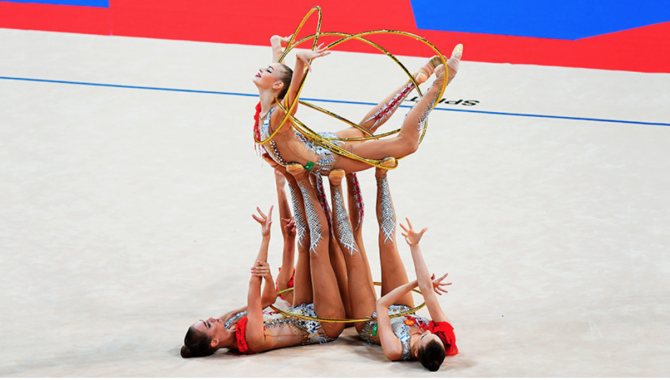
Indications
For recreational gymnastics, the doctor determines the indications. You should not decide to perform narrowly targeted exercises on your own. This can lead to disproportionate development of the child, causing more harm.
Among the factors that may contribute to the decision to send a child to the gymnastics section may be the child’s personal desire to become an outstanding athlete, minor posture disorders (only after consultation with a specialist), the parents’ desire to improve the child’s physical characteristics, strengthen character, discipline, develop willpower, make the child is more artistic, more emotional and more self-confident.
Champion or health
The most important choice, because professional sports and health are not very compatible things. Most professional schools, which make it a priority to develop champions and prize-winners of world tournaments, conduct strict selection, it is difficult to get there, the training is tough and exhausting physically and emotionally.
Along with such sports schools, there are also general development schools, where they do not choose stars, pay attention to the harmonious development and improvement of the health of children, do not torture them with exhausting training, but they do not put them on a world gymnastics pedestal.
The cost of classes is much higher, since they are held in groups of several people, and group leaders may require individual training with a star trainer. Constant trips to training camps and competitions, costumes and sports equipment require large investments.
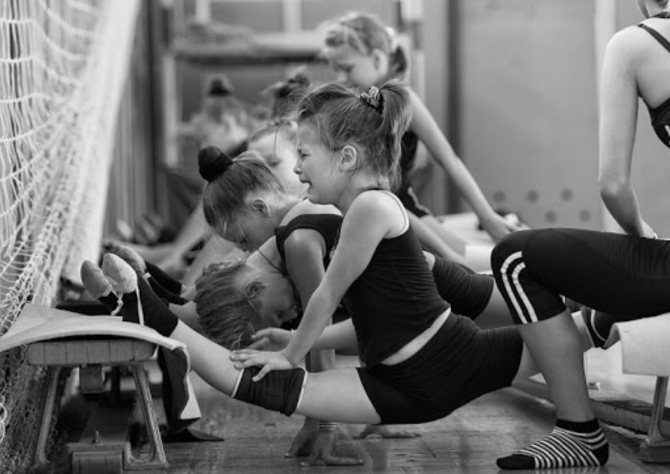
Contraindications to gymnastics in children
This sport involves significant physical activity, so the young athlete must be healthy. A child will not be allowed into the gym without a doctor’s certificate stating that there are no health contraindications for doing gymnastics.
Among the medical taboos for this sport:
- myopia, ophthalmological diseases;
- diabetes;
- any diseases of the heart and blood vessels;
- disturbances in the functioning of the musculoskeletal system, advanced scoliosis;
- deviations in the functioning of the nervous system.
All other contraindications are determined individually by the doctor when examining the child. In some cases, there are temporary bans until the ailments are eliminated: any type of hernia, infectious, respiratory and other diseases. After the examination, the pediatrician may prescribe a course of therapeutic exercises if adjustments to posture and the musculoskeletal system are required.





